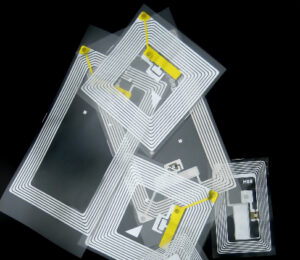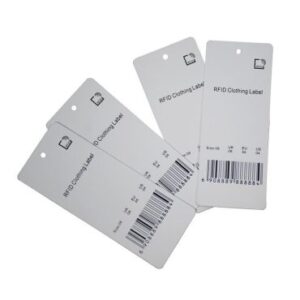Outsmarting Counterfeiters: The Role of RFID FPC Tags in Anti-Counterfeiting

In the relentless battle against counterfeit goods, where authenticity is often obscured by cunning deception, a powerful ally has emerged in the form of RFID FPC (Radio Frequency Identification Flexible Printed Circuit) tags. These unassuming yet formidable tools are revolutionizing the fight against knockoffs, empowering brands and consumers alike to distinguish between genuine products and fraudulent imitations.
Counterfeiting poses a pervasive threat to industries ranging from fashion and electronics to pharmaceuticals and automotive parts. The proliferation of counterfeit goods not only undermines brand integrity and erodes consumer trust but also poses significant risks to public health and safety. In this high-stakes game of cat and mouse, RFID FPC Tags are proving to be a game-changer.
Gone are the days when counterfeiters could easily replicate product packaging or tamper with serial numbers to deceive unsuspecting consumers. With RFID FPC tags, each genuine product is equipped with its own digital fingerprint – a unique identifier that cannot be replicated or tampered with. These tags, embedded within products or packaging, transmit encrypted data that can be authenticated by manufacturers, retailers, and consumers using specialized scanners or smartphone apps.
But the impact of RFID FPC tags extends far beyond mere authentication. These tiny marvels enable brands to implement robust anti-counterfeiting measures, such as track-and-trace systems and product serialization. By monitoring the movement of goods throughout the supply chain, brands can detect and deter counterfeiters at every stage – from manufacturing and distribution to retail and beyond.
Moreover, RFID FPC tags empower consumers to verify the authenticity of products themselves, providing peace of mind and confidence in their purchasing decisions. With a simple scan of a smartphone, consumers can access detailed information about the product’s origins, manufacturing process, and supply chain journey, ensuring that they are receiving genuine, high-quality goods.
Of course, the fight against counterfeiting is not without its challenges. Counterfeiters are constantly evolving their tactics, finding new ways to bypass security measures and deceive consumers. Moreover, the upfront costs of implementing RFID infrastructure may be prohibitive for some brands, particularly smaller businesses operating on tight budgets.
Nevertheless, the benefits of RFID FPC tags in anti-counterfeiting are undeniable. As brands and consumers alike demand greater transparency and accountability in the marketplace, embracing technological innovations is essential. And with RFID FPC tags leading the charge, the future of anti-counterfeiting is brighter than ever before.
In conclusion, the role of RFID FPC tags in combating counterfeiting is pivotal. From authenticating products to empowering consumers, these unassuming tags are reshaping the landscape of consumer protection and brand integrity. As the battle against counterfeit goods continues to escalate, RFID FPC tags stand as a beacon of hope, offering a potent weapon in the fight to preserve authenticity and trust in the marketplace.





